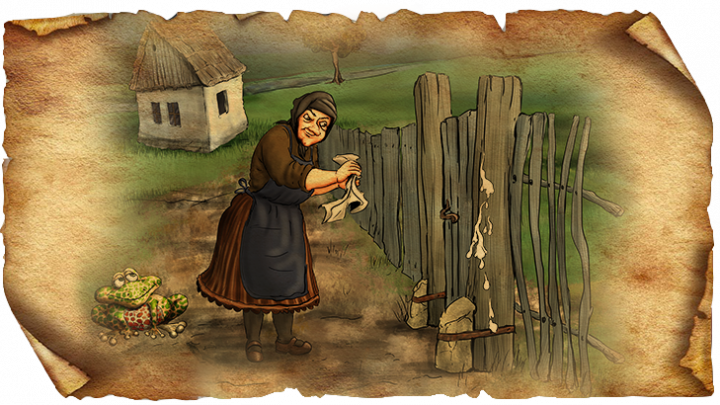The land of witches - Bún / Boiu

The village of Bún / Boiu near Fehéregyháza / Albești is made up of Small and Large Bún. The folklore believes that witches once lived in these very old settlements - and in the nearby Küküllősárd / Șoard settlement, as well…
There is a great number both of witches and caves in the area - not far from these mysterious caverns, one of the last battles of the 1848-49 Revolution and War of Independence took place on the field in Fehéregyháza.
The folk tradition says about these non ordinary caves that they are groundless: if someone throws a stone into the cave's mouth, it will disappear forever. The locals keep telling a story that a dog chasing a rabbit rushed into such a duct and its master could no longer see it. In fact, they also knew that the depth had swallowed a cow together with the chariot, and girls had disappeared from the village - the inhabitants of the region suspect they had been lost in such caves, as well.
The local witches were known to be extremely weird creatures by the people from the settlements Bún and Sárd. It was believed that, they had regularly stolen the milk of the locals' cows with their secret practices, and the farmers noticed much of the telling signals after a long time. Sooner or later, all the witches were unveiled: the villagers noticed a woman-like figure, who squeezed milk from the corners of her kerchief, and another made her own pet and helper, a toad underneath the udder of the cow, so she entranced the animal. There were others who swirled a cyclonic storm on the field, thus taking the shepherd far away to take the sheep milk until he returned.
Over time, when the villagers were aware of these practices and were sick of being mocked by the witches, they found many rituals to protect their cows from them.
They considered effective to place a dog head underneath the manger or, if they started to utter Lord’s prayer, then stabbed the fork four or five times into the floor, thus defeating the malicious intent.
Since there are no witches in the region today - at least the locals do not tell stories about them today - tourists do not have to be afraid from the whirlwind, they can go on a tour. Small villages can be travelled through by foot or by bicycle in good weather. The area of Bún and Sárd area was originally inhabited by Saxon settlers, and in 1564 Reformed Hungarians moved to the village, who later converted to the Unitarian religion.
Instead of the damaging spirits of folk beliefs, the wind of history touches us at Bún, when we visit the ruins of the once magnificent Bethlen Castle. The noble mansion was built by Bethlen Farkas historian, the 17th-century Chancellor of Transylvania. The building overcame succesfully the storms of the 20th century, and during the decades of communism, the state economic offices of Fehéregyháza settlement were located there. In the neighborhood of the castle is the river Great Küküllő - after a significant flood in the 1970s, a dam was built near the mansion. By the time the dam was finished, the building became abandoned. From the 1980s onwards, it was gradually destroyed, its doors, windows and beams were carried away.
As we move on to the hill called Sárkánykő / Dragonstone, it is recommended to step carefully, so that nobody can be thrown into one of the bottomless pits by the droughty witches.
There is a great number both of witches and caves in the area - not far from these mysterious caverns, one of the last battles of the 1848-49 Revolution and War of Independence took place on the field in Fehéregyháza.
The folk tradition says about these non ordinary caves that they are groundless: if someone throws a stone into the cave's mouth, it will disappear forever. The locals keep telling a story that a dog chasing a rabbit rushed into such a duct and its master could no longer see it. In fact, they also knew that the depth had swallowed a cow together with the chariot, and girls had disappeared from the village - the inhabitants of the region suspect they had been lost in such caves, as well.
The local witches were known to be extremely weird creatures by the people from the settlements Bún and Sárd. It was believed that, they had regularly stolen the milk of the locals' cows with their secret practices, and the farmers noticed much of the telling signals after a long time. Sooner or later, all the witches were unveiled: the villagers noticed a woman-like figure, who squeezed milk from the corners of her kerchief, and another made her own pet and helper, a toad underneath the udder of the cow, so she entranced the animal. There were others who swirled a cyclonic storm on the field, thus taking the shepherd far away to take the sheep milk until he returned.
Over time, when the villagers were aware of these practices and were sick of being mocked by the witches, they found many rituals to protect their cows from them.
They considered effective to place a dog head underneath the manger or, if they started to utter Lord’s prayer, then stabbed the fork four or five times into the floor, thus defeating the malicious intent.
Since there are no witches in the region today - at least the locals do not tell stories about them today - tourists do not have to be afraid from the whirlwind, they can go on a tour. Small villages can be travelled through by foot or by bicycle in good weather. The area of Bún and Sárd area was originally inhabited by Saxon settlers, and in 1564 Reformed Hungarians moved to the village, who later converted to the Unitarian religion.
Instead of the damaging spirits of folk beliefs, the wind of history touches us at Bún, when we visit the ruins of the once magnificent Bethlen Castle. The noble mansion was built by Bethlen Farkas historian, the 17th-century Chancellor of Transylvania. The building overcame succesfully the storms of the 20th century, and during the decades of communism, the state economic offices of Fehéregyháza settlement were located there. In the neighborhood of the castle is the river Great Küküllő - after a significant flood in the 1970s, a dam was built near the mansion. By the time the dam was finished, the building became abandoned. From the 1980s onwards, it was gradually destroyed, its doors, windows and beams were carried away.
As we move on to the hill called Sárkánykő / Dragonstone, it is recommended to step carefully, so that nobody can be thrown into one of the bottomless pits by the droughty witches.
